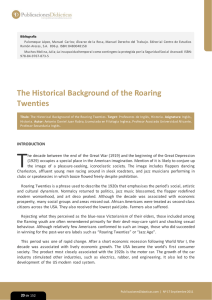Augustan to Gothic 1713−89
Anuncio
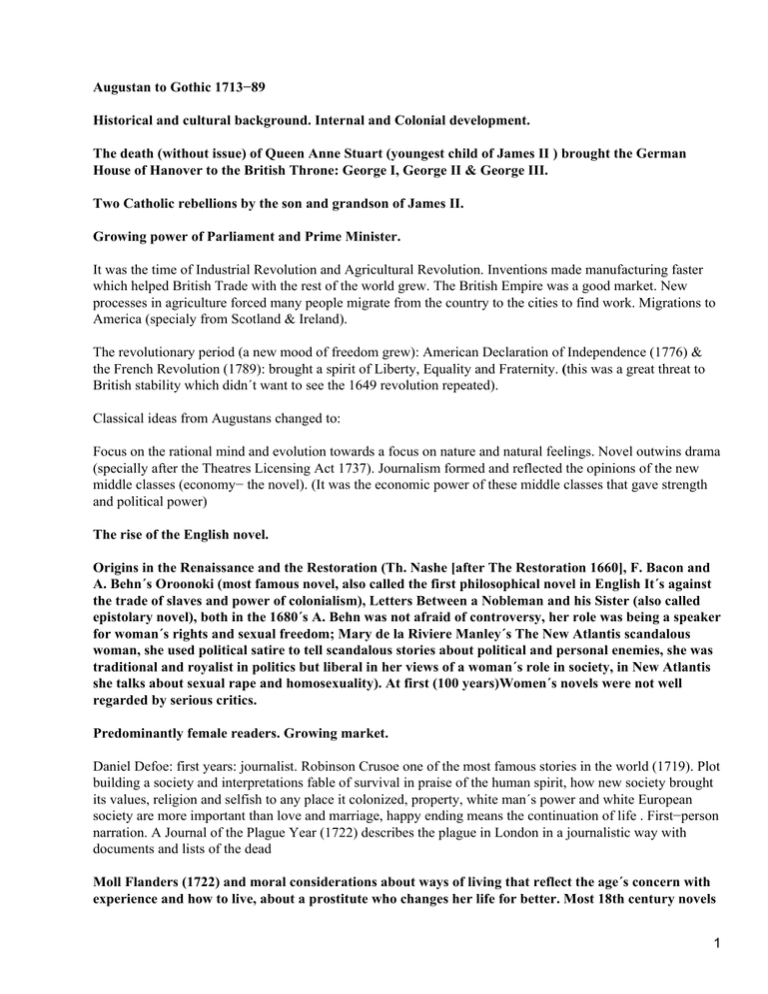
Augustan to Gothic 1713−89 Historical and cultural background. Internal and Colonial development. The death (without issue) of Queen Anne Stuart (youngest child of James II ) brought the German House of Hanover to the British Throne: George I, George II & George III. Two Catholic rebellions by the son and grandson of James II. Growing power of Parliament and Prime Minister. It was the time of Industrial Revolution and Agricultural Revolution. Inventions made manufacturing faster which helped British Trade with the rest of the world grew. The British Empire was a good market. New processes in agriculture forced many people migrate from the country to the cities to find work. Migrations to America (specialy from Scotland & Ireland). The revolutionary period (a new mood of freedom grew): American Declaration of Independence (1776) & the French Revolution (1789): brought a spirit of Liberty, Equality and Fraternity. (this was a great threat to British stability which didn´t want to see the 1649 revolution repeated). Classical ideas from Augustans changed to: Focus on the rational mind and evolution towards a focus on nature and natural feelings. Novel outwins drama (specially after the Theatres Licensing Act 1737). Journalism formed and reflected the opinions of the new middle classes (economy− the novel). (It was the economic power of these middle classes that gave strength and political power) The rise of the English novel. Origins in the Renaissance and the Restoration (Th. Nashe [after The Restoration 1660], F. Bacon and A. Behn´s Oroonoki (most famous novel, also called the first philosophical novel in English It´s against the trade of slaves and power of colonialism), Letters Between a Nobleman and his Sister (also called epistolary novel), both in the 1680´s A. Behn was not afraid of controversy, her role was being a speaker for woman´s rights and sexual freedom; Mary de la Riviere Manley´s The New Atlantis scandalous woman, she used political satire to tell scandalous stories about political and personal enemies, she was traditional and royalist in politics but liberal in her views of a woman´s role in society, in New Atlantis she talks about sexual rape and homosexuality). At first (100 years)Women´s novels were not well regarded by serious critics. Predominantly female readers. Growing market. Daniel Defoe: first years: journalist. Robinson Crusoe one of the most famous stories in the world (1719). Plot building a society and interpretations fable of survival in praise of the human spirit, how new society brought its values, religion and selfish to any place it colonized, property, white man´s power and white European society are more important than love and marriage, happy ending means the continuation of life . First−person narration. A Journal of the Plague Year (1722) describes the plague in London in a journalistic way with documents and lists of the dead Moll Flanders (1722) and moral considerations about ways of living that reflect the age´s concern with experience and how to live, about a prostitute who changes her life for better. Most 18th century novels 1 focus on the bad side of life but allow for a happy ending. Jonathan Swift: satirist. The Battle of the Books (published in 104) satirically exemplifies the difference between the Ancients and the Moderns. Gulliver´s Travels (pub. 1726) is his most angry satire. Plot satire about what he thinks is wrong in the world. Structure 4 parts, religion and politics is saterized in particular. Interpretation his view of life was seen as pessimistic and against the mood of time, his book was not taken seriously, thought for kids. He used everyday language, modern, commented on society but was not understood. A Modest Proposal (1729) a way to solve the Irish problem of too many children in a satiric way. Swift´s satire has shocking proposals. Samuel Richardson: publisher who thought of printing a guide to letter−writing for middle−class ladies. Pamela (1740) and Claris (1747−1749); themes: strength of men vs. Women, power of sex, social need for good patterns of behaviour. Female perspective. Artificial ending. He took his readers advice and suggestions and changed his plot while the novel was being published in parts. Henry Fielding: his fist novel, Shamela, is a parody of Richardson's Pamela. Joseph Andrews (1742) & Tom Jones (1749) are his best known novels. Male points of view. His purpose is to defend what is good by displaying the Ridiculous. Plots show the innocent learning from experience and they show human goodness. Comic characters focusing on the pleasures of life. Third−person omniscient narration. Examined male points of view. NOVEL AFTER 1750 Consolidation and new directions. Female writers: Charlotte Lennox in The Life of Harriot Stuart and in The Female Quixote concentrates on female experiences and viewpoints expects all men to be her slave . Sara Fielding`s David Simple avoids the happy ending and makes a victim of the male protagonist innocent hero. Laurence Sterne´s Tristam Shandy (1760−7): long, comic story that plays with time, plot, characterization and even with the shape of the page. First writer to use what would later be known as stream of consciousness(to write the way we think, without order or commas) . Influenced by Locke´s Essay Concerning Human Understanding (1690). Henry Mackenzie´s The Man of Feeling plays with emotions, time and plot while turning the idea of the strong masculine hero upside down. Very influential, specially on one of the masterpieces of German literature: Goethe´s Werther (1774). It seems to be a diary with pages and scenes missing. The reader never gets the whole story, part of the emotions of the new kind of hero: one who cries, easily moved. This novel was the first Scottish one to have success. Tobias Smollett´s Humphrey Clinker (1771). He was the major comic novelist of the second half of the 18th century and wrote strong novels with strong language and themes. Humphery Clinker is a long epistolary novel that describes the disunion of the U.K. THE COTHIC NOVEL: new directions of late 18th C. Novel in English. This horror novel explores fear and extreme feelings and imagination. The philosopher Edmund Burke had analysed (in his 1757 The Sublime and the Beautiful) the relationship between pleasure and fear. The Gothic novel pursues what Burke calls A sort of delightful horror. Gothic literature is one more step departing from the rational control of the Augustans towards the focus on emotion and feeling of the Romantics. Major novels: Horace Walpole´s The Castle of Oranto, Clara Reeve´s The Old English Baron, Anne Radcliffe´s The Mysteries of Udolpho, William Bexkford´s Vathek and Matthew Lewis´s The Monk. AUGUSTAN POETRY AND BEYOND 2 After Dryden´s death in 1700 the first major poetic work had to wait until 1712: Alexander Pope´s Rape of the Lock, a mock−heroic satire about a family quarrel over a bit of Belinda´s hair which had been cot off by a friend. Mock−heroic: laughing at the stupid self−importance of the characters. Pope´s Ducial is an attack on dullness of rival poets. Essay on Criticism (1711); Essay on Man (1733−4) are witty and wise literary−philosophical works. Women poets of the period: Lady Mary Wortley Montagu, Mary Leapor, Clara Reeve, Hetty Wright, etc. The Graveyard School: emphasis on death and delightful gloom 20 years before the Gothic Novel brought the same concerns to the novel. Forerunner: Edward Young´s Night Thoughts. Break with classical order and rationalism of Augustan poetry, while completely lacking the wit and irony of Pope´s tradition. Thomas Gray´s Elegy Written in a Country Churchyard (1750): celebrates the simple lives and deeds of the poor, ordinary people. It is a realistic pastoral that claims for a return to simpler values which foreshadow the Romantic return, at the end of the century, to nature and natural language. Other poets of the 18th C. : James Thomson (the Seasons) , Oliver Goldsmith (The vicar of Wakefield), William Cowper, William Collins (the Odes), Charlotte Smith (Elegiac Sonnets)and Fanny Burney (Evelina) all stress the values of country life. The case of the Scottish Robert Burns who was the greatest Scot novelist, themes are nature and humanity of nature: To a Mouse. JOURNALISM, CRITICSM, LETTERS & DIARIES Journalism of the 18th C. Took opinions and fashions of London and Edinburgh to the whole country. The Gentleman´s Magazine Richard Steele and Joseph Addison: The Tatler, The Spectator, The Englishman, The Guardian, The Lover, The Theatre. (middlebrow confortable and safe writing vs. Highbrow tone more intelectual) Samuel Johnson was the major critic of the 18th C. Dictionary of the English Language & Lives of the English Poets. Epistolography. Samuel Pepy´s diaries. Details of daily life through the Restoration, something novels can´t do. 3
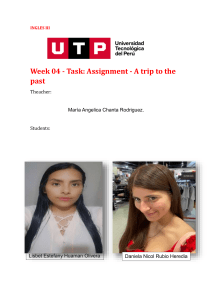
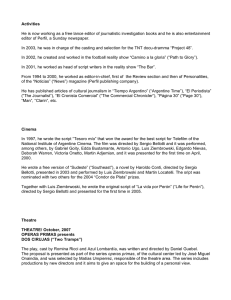
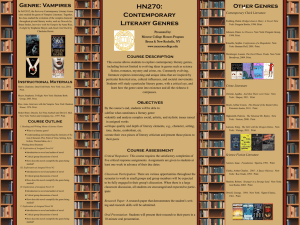
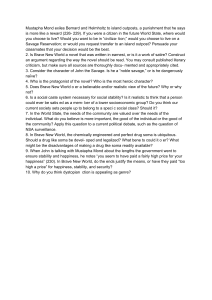
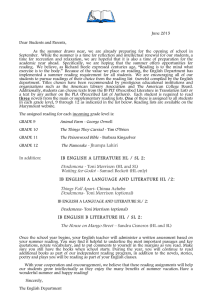
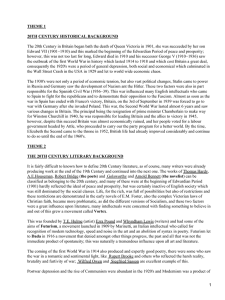
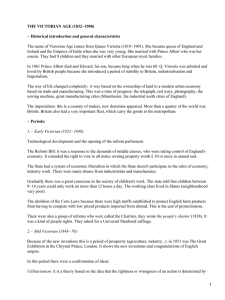
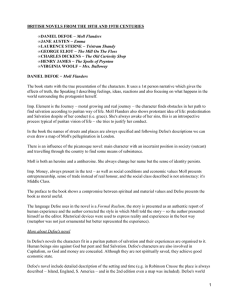
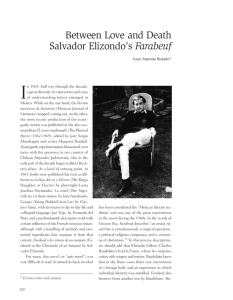
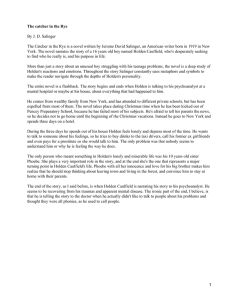
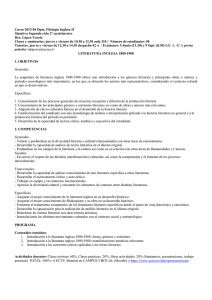
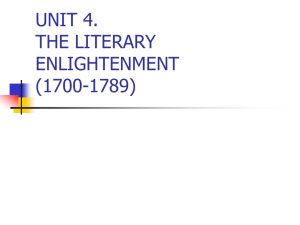
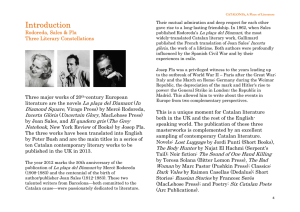
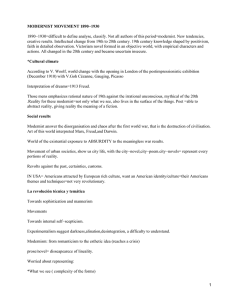
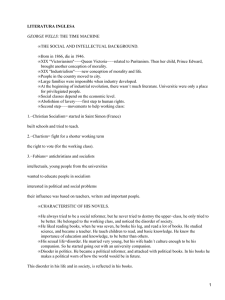
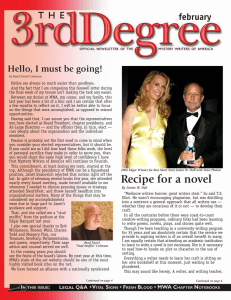
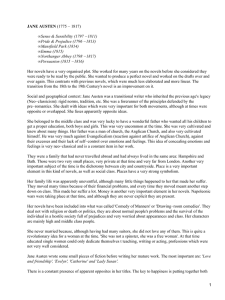
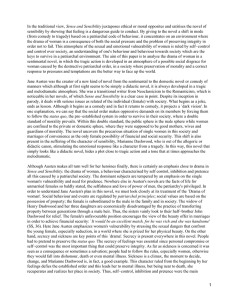
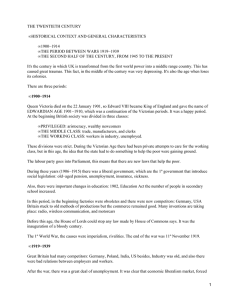

![LAZARILLO DE TORMES [1554] I. The picaresque novel: A very](http://s2.studylib.es/store/data/006112216_1-4e896eb1740cff4d986357429306ead6-300x300.png)
